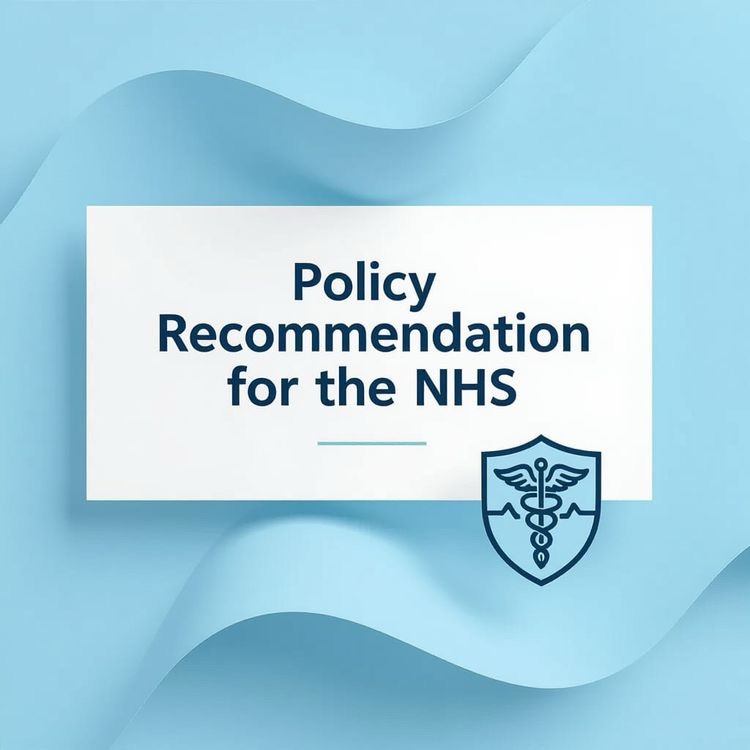A Proposal to Improve Care for Patients Presenting With Unusual or Hard‑to‑Classify Experiences
Executive Summary
This policy recommendation addresses a gap in the current NHS framework for assessing and supporting individuals who present with intense physical sensations, somatic distress, or experiences described in spiritual or energetic language.
When such presentations fall outside conventional biomedical categories, patients may be directed toward psychiatric evaluation by default even when their symptoms are primarily physical or somatic. This can lead to miscommunication, patient disengagement, and repeated assessments without actionable resolution.
This document proposes the creation of an Integrative Assessment Pathway that acknowledges:
the physical reality of somatic experiences, the diversity of cultural and spiritual explanatory models, the need for clearer communication between clinicians and patients, and the importance of reducing inappropriate psychiatric escalation.
The goal is improved patient outcomes, improved clinician confidence, and reduced system strain.
Background and Context
Certain patients report physical sensations that do not align neatly with common diagnostic categories. These may include:
intense heat or “white fire” sensations pressure changes in the head, neck, or abdomen vagal or lymphatic activation flow-like sensations in the torso somatic “discharge” presenting through the digestive system
These experiences can be alarming to the patient, and difficult for clinicians to interpret.
A lived case example illustrates the system gap:
The patient presented with strong physical symptoms. Unfamiliar or metaphorical language triggered concerns about mental health. Ten professionals were involved across multiple assessments. Drug testing was performed to rule out substance-induced symptoms. No one could offer a clear explanation or framework. Eventually, the patient disengaged from the system and had to manage the symptoms alone for months.
This outcome reflects a mismatch in frameworks, not a failure of individual clinicians.
Policy Problem
Current NHS pathways default to psychiatric referral when:
symptoms are difficult to classify patient language is metaphorical, symbolic, or spiritual physical symptoms are intense but non-dangerous clinicians perceive risk due to unfamiliar descriptions
This leads to:
unnecessary psychiatric assessments overuse of crisis or liaison services patient distress and loss of trust repeated assessments with no progression gaps in understanding somatic presentations clinicians feeling under-equipped to respond
A more nuanced pathway is needed.
**Policy Proposal:
The Integrative Clinical Assessment Pathway (ICAP)**
This pathway is designed to sit between standard medical assessment and psychiatric escalation.
Its purpose is to give clinicians a third option.
1. Step One: Medical Safety Check (Required)
Rule out:
infection neurological emergency cardiac/respiratory instability substance-related causes endocrine issues
This step remains unchanged.
2. Step Two: Somatic and Nervous-System Interpretation (New)
Clinicians receive brief training to recognise:
vagal overactivation somatic discharge dysautonomia lymphatic release stress-physiology spirals trauma-related body responses
This provides a non-pathological medical framework for intense sensations.
3. Step Three: Cultural/Spiritual Communication Literacy (New)
Clinicians are trained to respond neutrally and constructively to symbolic or spiritual language using statements such as:
“I believe you’re feeling something real.” “There are different ways people interpret these experiences.” “Let’s work together to understand the physical and physiological side too.”
This reduces fear and prevents escalation.
4. Step Four: Criteria for Psychiatric Escalation (Refined)
Psychiatric referral should occur only when:
the patient poses acute risk to self or others symptoms indicate psychosis independent of context there is evidence of disorganisation, detachment, or loss of functioning medical rule-outs are complete and symptoms remain unstable
Unusual experiences alone do not trigger automatic escalation.
5. Step Five: Follow-Up Care Pathway (New)
Provide:
somatic or trauma-informed physiotherapy nervous-system regulation guidance continuity with a single clinician community health monitoring if needed
This prevents abandonment and repeated crisis referrals.
Benefits of the Integrative Pathway
For Patients
reduced distress and fear clearer explanations of their symptoms no unnecessary psychiatric labelling improved trust and engagement feeling heard rather than dismissed
For Clinicians
a structured framework for difficult cases reduced anxiety about “what if I miss something?” fewer repeated assessments improved communication skills better outcomes with less resource use
For the NHS
reduced load on mental health crisis teams fewer unnecessary referrals improved efficiency and continuity alignment with modern culturally diverse populations strengthened public trust
Implementation Steps
Develop clinical guidance with input from: GPs Emergency staff Liaison psychiatry Somatic specialists Community health services Deliver short training modules through e-learning and CPD. Create a decision-support tool for frontline staff. Pilot in one NHS Trust and evaluate: patient satisfaction reduction in psychiatric referrals clinician confidence service efficiency Scale nationally based on data and feedback.
Conclusion
This recommendation does not ask the NHS to validate supernatural claims, adopt religious frameworks, or abandon scientific standards.
It asks the NHS to:
recognise somatic reality, acknowledge cultural diversity, improve communication, and avoid unnecessary psychiatric escalation.
By integrating somatic, cultural, and spiritual literacy into clinical pathways, the NHS can become more responsive, more humane, and more effective — without adding cost or compromising medical rigour.
This is healthcare evolution, not revolution.
